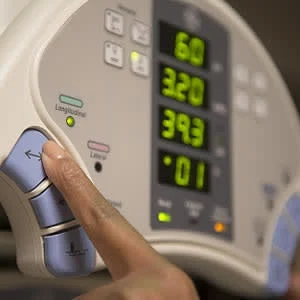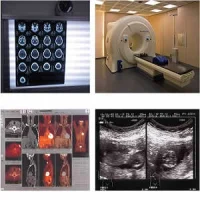The number of interventional procedures has expanded steadily over the last two decades as new interventions of increasing complexity have been developed. This increases the risk of the eye lens doses approaching or even exceeding the new annual radiation dose limit of 20 mSv set by the Ionising Radiations Regulations (IRR 2017), according to an article in press in the Journal of Radiological Protection.
The implementation of the new dose limit for the lens of the eye has focussed attention on the protection requirements for interventional radiologists and cardiologists, who undertake complex procedures that involve the placement of devices within the body through catheters to treat a variety of conditions under the guidance of x-ray imaging.
Those procedures require clinicians to stand close to patients to perform the manipulations while viewing the x-ray images, and as a result they are exposed to radiation scattered from the patients’ tissues. "Clinicians with medium or high workloads could receive doses to the eye that would exceed the new dose limit, if protective measures were not in place," the article says.
Interventional staff wear lead/rubber aprons to protect the trunk against scattered radiation, so effective doses to the whole body are unlikely to approach the effective dose limit (IRR 2017). However, the aprons do not shield the head, neck, arms, hands, and legs. An additional level of protection for the eyes can be achieved from use of lead glasses.
"Protective eyewear can reduce dose to the lens of the eye substantially, but will not provide complete protection," the article points out. "Scattered radiation can pass through gaps behind the lenses to irradiate the eyes directly, but a significant part of the eye lens exposure is from radiation scattered from tissues surrounding the eyes that are irradiated."
There are two types of lead glasses: a “wrap around” style with lenses angled to the front of the face, or ones with flat lenses and lead glass side shields. The protection provided by the lenses of current models is usually equivalent to a lead thickness of 0.75 mm. However, the protection factors offered by equivalent thicknesses of 0.5 mm and 0.35 mm are only about 5% and 12% less, so 0.75 mm is probably more than is needed, according to the article.
Guidelines on requirements for personal dosimetry in the UK will be published later this year. Therefore, interventional operators in the UK who are classified radiation workers will need to wear a dosemeter under their lead apron to measure personal dose equivalent Hp(10) to give an assessment of effective dose, and a dosemeter adjacent to the eye to measure Hp(3), the article explains.
Methods for protection of the eyes of interventional radiologists and cardiologists are still developing. "More efficient use of ceiling suspended screens is perhaps the best way of keeping doses to the eye lens low," the article notes. Further, there is a continuing need for staff involved in interventional procedures to have periodic education and training to ensure that protection facilities are used effectively as well as emphasising the importance of dose monitoring.
The article also highlights "the need for companies that supply radiation protection devices and services to make improvements through evaluating the designs of protective eye wear that are appropriate for the future, and supplying eye dosemeters that are easy to use, reliable, and give accurate measures of eye lens doses."
Source: Journal of Radiological Protection
Image Credit: Moody Air Force Base
References:
Martin CJ et al. (2018) Protecting interventional radiology and cardiology staff: Are current designs of lead glasses and eye dosemeters fit for purpose? J. Radiol. Prot. in press https://doi.org/10.1088/1361-6498/aabd4c
Latest Articles
radiation dose, Radiation protection, lead glasses, eye dosemeters
The number of interventional procedures has expanded steadily over the last two decades as new interventions of increasing complexity have been developed. This increases the risk of the eye lens doses approaching or even exceeding the new annual radiation










